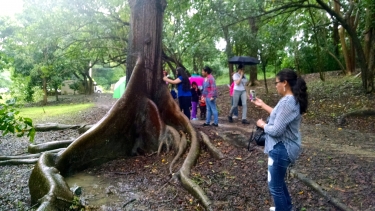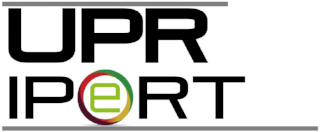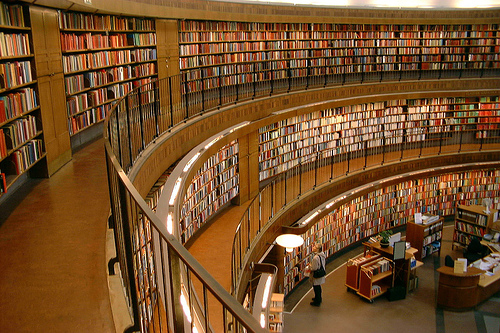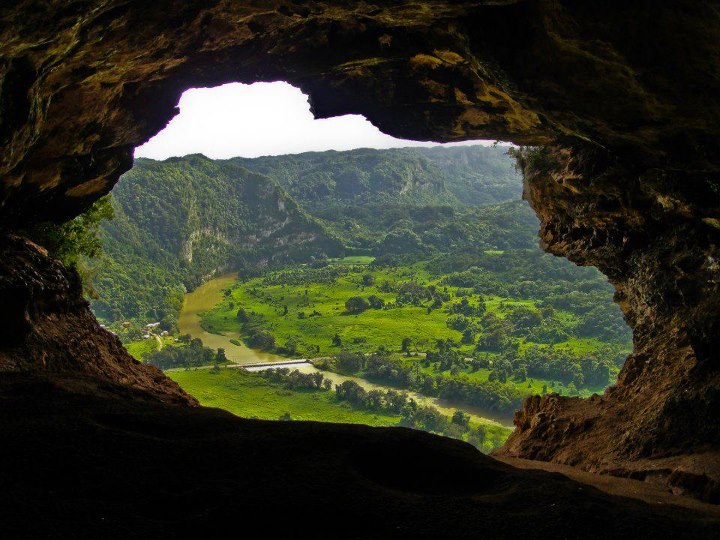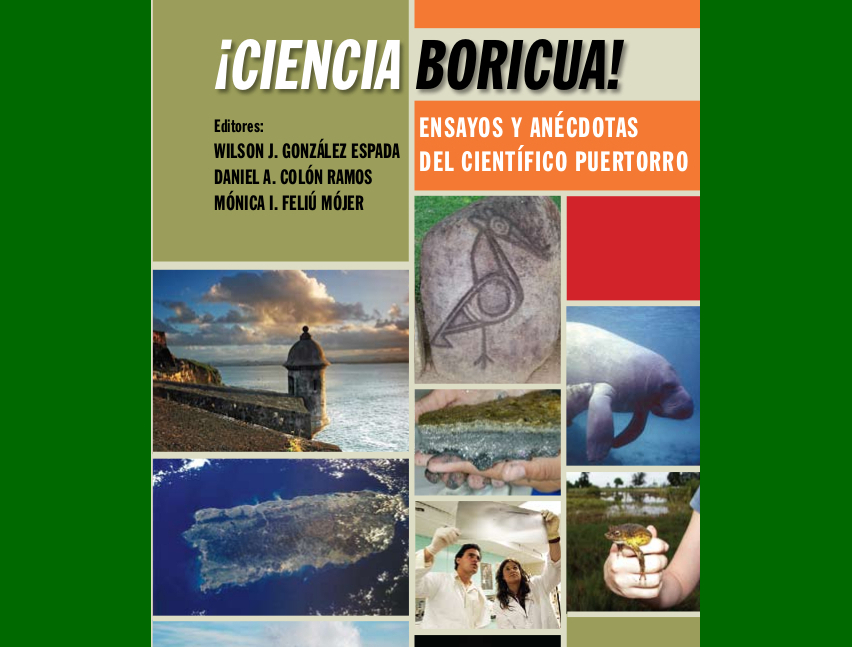Searching for antibiotics in Puerto Rican soil
Submitted by Simón Antonio Hernández on
In November 2014 I found myself drenched in rainwater at the Humacao Nature Reserve collecting soil samples… well, more like mud samples. It was my first morning in Puerto Rico and it had been raining since my arrival. Yet the University of Puerto Rico students accompanying me were determined to fill their conical tubes with soil, at all costs. Our goal: to discover new antibiotic producers in the soil.
The realization that soil bacteria produce an incredible array of useful molecules, from fluorescent pigments to enzymes used in detergents to some of the drugs in our medicine cabinets, has been around for decades. In fact, more than 70% percent of the antibiotics we use today originated in the soil. After billions of years of evolution, microbes have figured out clever ways to compete and interact with one another, and survive in this complex ecosystem. Grow them in a laboratory medium, and one cell will reproduce to spread across the entire surface of the Petri dish. Yet in the soil, bacteria exist in an intricate balance that microbiologists are only beginning to understand.
The Antibiotic Crisis
Many antibiotics available today are not effective against microbes that have evolved to evade and resist them. This leaves clinicians with fewer and fewer options for treatment. In an effort to revolutionize science education and address the antibiotic crisis, in 2013 Yale launched the Small World Initiative. This program redesigns undergraduate science laboratory courses to give college students the opportunity to do their own research and discover new antibiotics from samples from their own backyards.
At the beginning of the course, students go out into their environment and bring back one gram of soil to isolate and culture the bacteria living in it. Throughout the semester, they do a series of experiments to characterize their soil samples, isolate unique bacteria, and test them against microorganisms that are related to some of the most threatening human pathogens, such as Methicillin-resistant Staphylococcus aureus (commonly known as MRSA) and Acinetobacter baumannii, a common cause of hospital-acquired infections in Puerto Rico. These antibiotic-resistant pathogens are becoming increasingly more difficult to treat, making simple surgeries and skin infections just as deadly as they were a hundred years ago.

Crowdsourcing Antibiotic Discovery
A few years ago, Jo Handelsman, a microbiology professor at Yale University (currently on leave as President Obama’s chief life sciences advisor) had the brilliant idea of “crowdsourcing” antibiotic discovery with college students around the world. These students would feed their results into an online database and find new antibiotics, which could become candidates for drug development.
In Jo’s lab laboratory, Tiffany Tsang, a former postdoctoral associate, and myself, a recent Dickinson College graduate with a bachelor’s in biology, took on the mission to develop experiments, lab manuals, and a social network to connect laboratories around the world interested in implementing the Small World Initiative.
In 2013, after teaching the course at Yale, we selected 25 professors from around the country and trained them teach it at their home institutions. The outcome was amazing: 1,000 students around the US took the course, and many continued to study their antibiotic producers in the hopes of unraveling novel compounds. This first group of professors helped us train and mentor the next generation of Small World Initiative partners, which now include two institutions in Puerto Rico and partners in Belize, Malaysia, the UK, and Canada.
Bringing Small World Initiative to Puerto Rico
It was in the Small World Initiative 2014 summer workshop where I met biology professor Lilliam Casillas Martinez from the University of Puerto Rico – Humacao. Being the only Latinos in the group, we immediately clicked. At the end of the weeklong workshop she invited me to hold a similar session for her students at Humacao.
I was thrilled to finally visit “La Isla del Encanto”. It was my first time, even though I had spent nearly half of my life in the neighboring Dominican Republic. Surprised by the wondrous chorus of the coquí that November morning, I was welcomed into a microbiology lab by about a dozen undergraduate students anxious to start this adventure.
Later that day, at the Humacao Nature Reserve, the torrential rain led us to take cover under the canopy of endemic trees. Dr. Casillas pointed at a massive ceiba, and the students huddled around the ancient tree, interested in the microbes that would be associated with its bark and roots. Other students collected soil surrounding a saline pond where they suspected they would acquire anaerobic bacteria.
This was unlike any other sampling experience I ever had. Back in New Haven, Connecticut, our students rarely worry about collecting under rain but are often worried about how to dig through ice and snow. Yet, something was very familiar as I watched the students realize that the samples at their hands weren’t just “dirt”; on the contrary, they contained an abundance of biological and chemical diversity that could help us one day combat antibiotic resistance.

Over the next couple of days, we plated the soil samples on general growth media and incubated them overnight to see what might grow. One of the students placed leaves and slices of roots to isolate plant-associated microbes. Another used the classical serial dilution method to obtain single colonies of bacteria.
Though time was too short to test all of the unique isolates and screen them against all of the panels of clinically relevant microorganisms, the group was able to observe the great biodiversity of their local soils and store promising bacteria for future testing. In the end, this workshop turned out to be what many students hope their laboratory courses could be: fun, stimulating, interactive, and transformative, changing the way they look and appreciate at the world underneath their feet.




